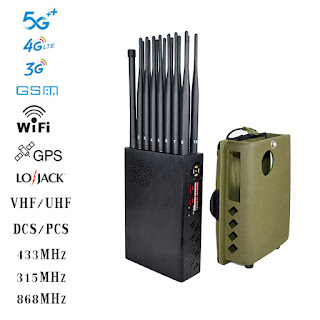Defensive Systems Against Drones Specifically for Drone Pilots
A drone jammer (also known as a drone jammer gun) is a device used to bring drones to the ground.
It achieves its purpose by obstructing the radio signals that regulate drone activity, resulting in the grounding of drones through the blockage of their communication channels.
The drone industry is enjoying substantial and rapid growth, and it appears that this momentum will continue unabated.
With the surge in drone usage, a critical issue has arisen: the necessity of keeping drones clear of no-fly zones.
The Federal Aviation Administration is actively engaged in efforts to support drone pilots and the general public in adapting to the ongoing evolutionary phase.
Although considerable efforts have been made, the process of incorporating drones into commercial airspace has faced various obstacles, and the frequency of drone incidents at sporting events, airports, and other sites seems to be on the rise.
How do drone jammers work?
By generating electromagnetic noise at designated radio frequencies, drone jammers seek to override the radio and GPS signals that are essential for the operation of drones.
The frequencies utilized by drone jammers are commonly identified as 2.4 GHz or 5.8 GHz. These are public frequencies that do not correspond to allocations for manned aircraft, public broadcasts, or cellular networks.
Drone jammers are often designed to look like guns and operate by sending out a jamming signal that covers a cone of about 15 to 30 degrees.
When a drone is affected by a jamming signal, it generally defaults to returning to its point of origin, unless the GPS signal is also disrupted. This response provides the jammers operator with the opportunity to track the drone and determine the pilot's position. Furthermore, in some scenarios, a drone jammer may force the drone to land at the scene, which can be beneficial for conducting a forensic analysis.
The most effective drone jammers on the market can reach a range of almost a mile, and their performance becomes more pronounced as the pilot's remote control moves further away from the drone.
After occurrences like the 2015 drone crash on the White House lawn, federal agencies have considerably intensified their use of drone jammers to defend critical infrastructure and the residences of senior government officials, including the White House.
Events characterized by large audiences and significant media exposure, such as the Olympics and the Super Bowl, commonly implement drone jammers to deter unauthorized drone activities that could disrupt the event or compromise safety. For example, during the Super Bowl at Mercedes-Benz Stadium in Atlanta, the use of drone jammers was an integral component of a broader security strategy that included both choreography for the show and surveillance operations.
Checklist for choosing a quality drone jammer:
Confirm that the jammer reaches the appropriate distance to provide effective protection for the assigned airspace.
The system ought to be straightforward to navigate and should require only a small degree of training for users to manage effectively.
Search for a jammer designed to block a diverse range of frequencies, ensuring compatibility with multiple drone models.
Reflect on whether a portable device for field operations is essential for your purposes, or if a fixed device for permanent installation would be more appropriate.
Identify a device that offers resilience and consistent performance in a range of environmental circumstances.



Comments
Post a Comment